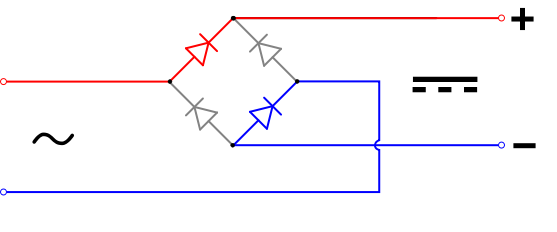In the realm of electronic circuits, bridge rectifiers play a crucial role in converting alternating current (AC) into direct current (DC). Understanding the fundamentals of bridge rectifiers is essential for anyone delving into electronics or seeking insights into power supply systems. In this article, we will explore the various aspects of bridge rectifiers, unraveling their functionality and examining their significance in electronic applications.
What is a Rectifier Bridge?
A rectifier bridge is a fundamental component in electronics designed to convert AC to DC. It consists of four diodes arranged in a specific configuration, forming a bridge circuit. This arrangement allows the rectifier bridge to rectify AC voltage, enabling the flow of current in a unidirectional manner.

What Does a Rectifier Bridge Do?
The primary function of a rectifier bridge is to rectify AC voltage by converting it into DC. In an AC waveform, the voltage alternates between positive and negative values. A rectifier bridge utilizes its diode configuration to allow only one half of the AC waveform to pass through, resulting in a pulsating DC output. This rectified output is more suitable for electronic devices and components that require a steady DC power source. Helpful resource: https://byjus.com/physics/bridge-rectifier/#:~:text=We%20can%20define%20bridge%20rectifiers,a%20direct%20(DC)%20current.
How Bridge Rectifier Converts AC to DC?
The conversion process involves the diodes within the rectifier bridge allowing the positive half-cycle of the AC voltage to pass through while blocking the negative half-cycle. The diodes effectively create a unidirectional flow of current, resulting in a waveform that resembles a series of positive pulses. Capacitors are often used in conjunction with bridge rectifiers to smooth out these pulses, producing a more stable DC output. Helpful resource: https://www.derf.com/how-a-bridge-rectifier-works-step-by-step-tutorial/#:~:text=Bridge%20Rectifiers%20use%20four%20diodes,of%20the%20input%20AC%20signal.
Does a Bridge Rectifier Reduce Voltage?
While a bridge rectifier does not actively reduce voltage, the nature of the rectification process leads to a pulsating DC output that has a higher average voltage than the original AC input. To obtain a steady and lower-voltage DC output, additional filtering components such as capacitors and voltage regulators are often employed in the circuit. Helpful resource: https://en.wikipedia.org/wiki/Rectifier#:~:text=Bridge%20rectification%20has%20a%20loss,alternating%20voltage%20must%20be%20rectified.
What Happens When a Bridge Rectifier Fails?
Like any electronic component, bridge rectifiers can fail due to various reasons such as overheating, voltage spikes, or manufacturing defects. When a bridge rectifier fails, it can result in a loss of DC output, leading to malfunctioning electronic devices. Diodes within the rectifier bridge may short or open, disrupting the rectification process. Regular monitoring and proper heat dissipation measures can help prevent premature failure of bridge rectifiers. Helpful resource: http://www.tvs-gr.com/en/news/view.php?id=566#:~:text=When%20the%20rectifier%20bridge%20circuit,the%20insulation%20is%20not%20good.
In conclusion, the rectifier bridge is a critical element in the world of electronics, facilitating the conversion of AC to DC. Its ability to rectify voltage is vital for powering a myriad of electronic devices that have become integral to our daily lives. Understanding the inner workings of bridge rectifiers empowers electronics enthusiasts and professionals alike, enabling them to design and troubleshoot circuits with confidence.
Facts Checked by Hugh Johnson
Hugh Johnson stands tall in the realms of both the chip industry and the electronic parts industry, earning acclaim as an esteemed expert in these fields. With an extensive background steeped in semiconductor technology, Hugh's expertise transcends chip design and fabrication, encompassing a profound understanding of electronic components' intricate functionalities and applications. His seasoned knowledge spans diverse facets, from microchip architecture and fabrication techniques to the broader landscape of electronic parts utilized across industries.









